Hack Squat Guide: Master the Barbell & Machine Hack Squat Form
Hack Squat: Your Guide to the Ultimate Quad Builder
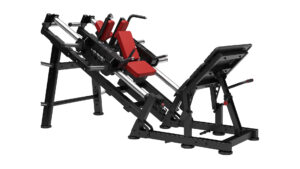
The hack squat is one of the most effective workouts for developing strong, powerful legs. Whether you're training in a high-performance centre, a commercial gym, or outfitting a studio with professional-grade equipment, hack squats are a go-to action for targeting the quads while giving adaptability for athletes and fitness aficionados.
In this blog, we'll go over everything you need to know about hack squats, including their benefits and variations, as well as how to master hack squat form and why the appropriate equipment is so important.
What is a Hack Squat?
A lower-body strength training exercise that targets the quadriceps while simultaneously working the glutes, hamstrings, and calves is the hack squat. It is often done in one of two ways:
- Barbell Hack Squat (Bar Hack Squat): The traditional free-weight variation, in which you squat down with your chest raised and a barbell behind your legs.
- Hack Squat Machine: A popular option in gyms and performance centres, this guided, plate-loaded equipment provides regulated movement and increased safety.
Both versions aim to maximise quad development, but they have different advantages based on your training environment and approach.
Also Read: Dumbbell Front Raises
Why Choose Hack Squat Exercises?
Why should you include the hack squat in your training regimen or gym equipment when there are so many other leg workouts available?
- Quad Isolation: It is one of the few exercises that directly and efficiently works the quadriceps.
- Lower Back Support: The machine version is appropriate for sportsmen recuperating from back problems because it lessens the tension on the spine.
- Progressive Overload: For steady strength and muscle growth, adding weight is simple.
- Versatility: Both advanced lifters looking for high-volume training and beginners in need of stability might benefit from it.
The hack squat machine is a huge asset to gyms and sports clubs since it serves a diverse range of users, from regular members to professional athletes.
Hack Squat vs Traditional Squats
Although barbell squats are regarded as the ultimate leg workout, hack squats offer a more targeted option.
- Barbell Squats: Focus on core stability while engaging your entire lower body.
- Hack Squats: Lifters will be able to isolate their quadriceps more effectively and require less balance.
In order to provide members with a comprehensive lower-body training arsenal, facilities must have both alternatives available.
Perfecting Your Hack Squat Form
Maintaining proper form is crucial for both muscle growth and injury prevention. Here is a detailed explanation:
On the Hack Squat Machine
- Set Up: Place your feet shoulder-width apart, your back firmly against the support, and your shoulders beneath the pads.
- Foot Placement: To put more attention on your quadriceps and less strain on your knees, place your feet slightly forward on the platform.
- Execution:
- Unlock the machine.
- Lower yourself in a controlled motion until your thighs are parallel (or just below parallel).
- Drive back up through your heels without locking your knees.
Barbell Hack Squat (Bar Hack Squat)
- Start Position: On the floor, place a weighted barbell behind your legs.
- Grip: Reach down and grab the barbell with your overhand grip.
- Movement: Squat down by bending your knees while maintaining your torso upright and your heels firmly planted.
- Return: Push through your quads to go back to standing, with the barbell remaining behind your legs.
Pro Tip: Avoid having your knees cave in. Always keep them in line with your toes to safeguard your joints.
Also Read: Dumbbell Front Raises
Why Choose Hack Squat Exercises?
Why should you include the hack squat in your training regimen or gym equipment when there are so many other leg workouts available?
- Quad Isolation: It is one of the few exercises that directly and efficiently works the quadriceps.
- Lower Back Support: The machine version is appropriate for sportsmen recuperating from back problems because it lessens the tension on the spine.
- Progressive Overload: For steady strength and muscle growth, adding weight is simple.
- Versatility: Both advanced lifters looking for high-volume training and beginners in need of stability might benefit from it.
The hack squat machine is a huge asset to gyms and sports clubs since it serves a diverse range of users, from regular members to professional athletes.
Hack Squat vs Traditional Squats
Although barbell squats are regarded as the ultimate leg workout, hack squats offer a more targeted option.
- Barbell Squats: Focus on core stability while engaging your entire lower body.
- Hack Squats: Lifters will be able to isolate their quadriceps more effectively and require less balance.
In order to provide members with a comprehensive lower-body training arsenal, facilities must have both alternatives available.
Perfecting Your Hack Squat Form
Maintaining proper form is crucial for both muscle growth and injury prevention. Here is a detailed explanation:
On the Hack Squat Machine
- Set Up: Place your feet shoulder-width apart, your back firmly against the support, and your shoulders beneath the pads.
- Foot Placement: To put more attention on your quadriceps and less strain on your knees, place your feet slightly forward on the platform.
- Execution:
- Unlock the machine.
- Lower yourself in a controlled motion until your thighs are parallel (or just below parallel).
Drive back up through your heels without locking your knees.
Barbell Hack Squat (Bar Hack Squat)
- Start Position: On the floor, place a weighted barbell behind your legs.
- Grip: Reach down and grab the barbell with your overhand grip.
- Movement: Squat down by bending your knees while maintaining your torso upright and your heels firmly planted.
- Return: Push through your quads to go back to standing, with the barbell remaining behind your legs.
Pro Tip: Avoid having your knees cave in. Always keep them in line with your toes to safeguard your joints.
Also Read: Dumbbell Front Raises
Common Mistakes to Avoid
Even the most seasoned lifters can develop bad habits. Watch out for these pitfalls:
- Too Much Weight: Prioritise form before loading big plates.
- Shallow Range of Motion: Partial rep limit Quad activation - aim for full depth where comfortable.
- Poor Foot Placement: Placing your feet too far forward or backward can cause unneeded knee or hip pain.
- Locking Out Knees: Maintain tension in the muscles, not the joints.
Who Should Do Hack Squats?
Hack squats are suitable for:
- Athletes: Looking to increase lower-body strength and explosiveness.
- Gym Members: Seeking safer alternatives to barbell squats.
- Bodybuilders: Emphasis on hypertrophy and quad definition.
- Rehab Clients: (with assistance) who require controlled strength development.
For gym operators, implementing a hack squat machine provides accessibility across various demographics, increasing member satisfaction and retention.
Hack Squat Variations
To keep training interesting, there are various variations worth trying:
- Close-Stance Hack Squat: Targets the quad's outer sweep.
- Wide-Stance Hack Squat: Engages the inner thighs and glutes.
- Reverse Hack Squat: Performed facing the machine, with a greater emphasis on the posterior chain.
- Tempo Hack Squats: Slowing the eccentric (lowering) phase results in higher muscular tension.
These choices make hack squats a versatile exercise that may be used to achieve a variety of fitness goals.
Choosing the Right Hack Squat Machine
Not every machine originates equal. Australia's high-performance gyms and facilities require equipment that strikes a balance between biomechanics, durability, and safety.
Performaxx distributes some of the most reputable strength equipment manufacturers in the world, such as Rogers, Prime, and Atlantis, to ensure that athletes and members have optimal results, proper alignment, and fluid motion.
Purchasing high-quality equipment results in more satisfied consumers, longer-lasting performance, and fewer maintenance issues.
Hack Squats and Long-Term Progress
Consistency and smart programming are essential for optimising hack squats. Include them in your leg workouts one or two times a week, whether you use a barbell or a hack squat machine. For balanced lower-body development, combine with complimentary exercises such as leg presses, Romanian deadlifts, and lunges.
Final Thoughts
More than simply another leg workout, the hack squat is an effective way to build your quadriceps, increase your strength, and engage your members. By serving both sportsmen and regular members, providing hack squat machines to gym owners and performance centres enhances their establishment.
Hack squats may revolutionise your training and produce results that are genuinely remarkable if you have the proper tools and advice.
Smith Machine Squats: Proper Form, Benefits & How to Do It Right
Everything You Need to Know About Smith Machine Squats
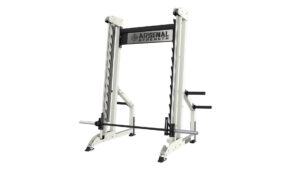
When it comes to strength training, the smith machine squat is a popular exercise for increasing lower-body strength, balance, and muscular control. Whether you're a seasoned lifter, a personal trainer, or a gym owner trying to give various equipment alternatives, the Smith machine is a must-have in practically every performance centre and commercial gym in Australia.
In this blog, we'll go over all you need to know about squats on a Smith machine, including proper form and technique, variations, advantages, and common mistakes to avoid.
What Is a Smith Machine Squat?
A smith machine squat is a variation of the squat that is done with a smith machine, which is a piece of exercise equipment with a barbell fixed inside steel rails. The smith machine bar moves on a guided route, which offers more stability and control than a free barbell squat.Because of this, smith machine squats are perfect for novices learning form or for experienced lifters who want to target muscles more precisely without a spotter
Why Choose the Smith Machine for Squats?
The smith machine squat is a great addition to any training regimen since it provides a number of advantages.
- Stability & Safety: by adding extra support, the fixed bar path lowers the chance of losing equilibrium when performing big lifts.
- Muscle Isolation: reduces the stabilising demands on the core, which aids in isolating the quadriceps, glutes, and hamstrings.
- Beginner Friendly: ideal for people who are new to strength training and are still developing their squat mechanical confidence.
- Progressive Overload: permits gradual weight increases, which facilitates concentration on strength training.
- Convenience: The machine's safety catches double as an inbuilt spotter, making it perfect for solo workouts.
Also Read: Dumbbell Front Raises
Correct Smith Machine Squat Form
To optimise results and prevent injuries, it is imperative to learn proper form for smith machine squats. Here is a detailed guide:
- Set the Bar Height: The bar should be positioned below shoulder level.
- Foot Placement: Place your feet shoulder-width apart, about 10 to 15 cm in front of the bar. This makes it easier to mimic a natural squat.
- Unrack the Bar: Step into your stance after placing the bar across your upper traps and turning the bar hooks to unlock it.
- Brace Your Core: Keep your shoulders back, your chest high, and your core active.
- Lower into the Squat: Lower your thighs till they are parallel to the floor by bending at the hips and knees at the same time (or lower if comfortable).
- Drive Back Up: Return to the beginning position after pushing through your heels and extending your hips and knees.
- Re-Rack Safely: When your set is finished, rotate the bar back into the locked position.
Tip: Do not allow your knees to sag inward; instead, keep them in line with your toes. Effective smith machine squat exercises are built on proper form.
Common Mistakes to Avoid
When practicing squats on a smith machine, many gym patrons unintentionally commit mistakes. Steer clear of these typical errors:
- Feet Too Far Back: Knee strain might result from standing right beneath the bar. Keep your feet a little forward.
- Shallow Squats: Muscle activation is decreased when the reduction is insufficient. At least parallel depth is what you want.
- Rounded Back: To avoid injury, keep your spine neutral.
- Relying Only on the Machine: Even though it provides stability, you should continue to use your core and balance during the exercise.
Variations of Smith Machine Squats
The adaptability of the smith machine is among its best features. You should incorporate the following well-liked smith machine squat routines into your routine:
- Standard Squat on Smith Machine – classic form that works the glutes, hamstrings, and quadriceps.
- Front Squat on Smith Machine – bar over the front shoulders, emphasising the core and quadriceps.
- Split Squat (Bulgarian Style) – elevated rear foot, highlighting balance and strength on one leg.
- Sumo Squat – To engage the inner thighs and glutes, use a wide stance.
- Partial Squats – restricted range of motion for rehabilitation or hypertrophy.
By using these variations, you can keep your workouts interesting and avoid plateaus.
Also Read: What is Interval Training?
Who Should Use the Smith Machine Squat?
A wide range of gym-goers can benefit from the Smith machine squat, including:
- Beginners: Learn squat mechanics with less risk.
- Bodybuilders: Seeking focused muscle stimulation.
- Athletes: Increasing strength through regulated movement.
- Rehabilitation Clients: A safe choice for those healing from injuries.
- Personal Trainers & Gym Owners: Offering clients versatility in small studios and performance centres.
Smith Machine Squats vs Free Barbell Squats
Each exercise has a role in a strength training regimen.
• Smith Machine Squats are perfect for targeted hypertrophy and rehabilitation because they offer safety, stability, and control.
• Free barbell squats are wonderful for developing total functional strength since they need a higher level of core and stabilising muscle engagement.
Depending on the training objectives, many effective programs use both.
Programming Smith Machine Squats
Here is an example guideline for incorporating smith machine squats into your training regimen:
- Beginners: 3 sets of 10–12 repetitions with an emphasis on form.
- Strength Goals: 4–5 progressive overload sets of 5–8 repetitions.
- Hypertrophy (Muscle Growth): 3–4 moderate-to-heavy weight sets of 8–10 repetitions.
- Endurance/Conditioning: lighter weight and more repetitions (12–15+).
For well-rounded strength development, always combine squats with lower body workouts that compliment them, such as leg presses, lunges, and deadlifts.
Why Performaxx Recommends the Smith Machine
At Performaxx, we recognise how crucial high-quality equipment is to enhancing strength and avoiding injuries. The Smith machine continues to be a mainstay in many gyms in Australia, New Zealand, and Bali because it serves both regular exercise enthusiasts and professional athletes.
Performaxx ensures that your members receive training that is safer, more efficient, and equipped with long-lasting equipment by carrying high-end international brands that are renowned for their performance and durability.
Final Thoughts
More than simply a simple exercise for beginners, the smith machine squat is a multipurpose workout that can improve muscle growth, increase strength, and make lifting safer. Using a smith machine to execute squats can produce long-term results whether you're exercising in a commercial gym, a high-performance facility, or a boutique studio.
At Performaxx, we provide top-notch smith machines and exercise equipment designed specifically for Australian gyms and performance spaces. Our staff is here to assist you if you wish to improve your training environment or upgrade your equipment.
Best Row Exercises: Build Back Strength with Row Workouts
The Best Row Exercises to Build Back Strength and Size
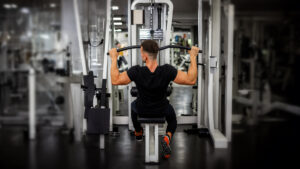
Rowing exercises are one of the most efficient strategies to develop a strong, powerful back. These motions, ranging from classic barbell rows to sophisticated back row machines, work not only your back but also your arms and core. Whether you practice at home, in a studio, or at a performance facility, including rows into your program is one of the most effective ways to increase size and strength.
In this blog, we'll look at why rows are important for back training, explore numerous variations to attempt, and show you how to make the best use of available gym equipment for optimal results.
Why Rowing is the King of Back Exercises
The back is one of the most complicated parts of the body since it has many muscle groups, such as the lats, traps, rhomboids, and spinal erectors. A strong back not only looks strong, but it also helps you stand up straight, keeps you from getting hurt, and makes practically every other lift better.
The back rows exercise is different because it
- Works out several muscles at once, giving you a full back exercise rows session.
- Increases pulling strength, which is important for sports performance and functional training.
- Improves posture by making the muscles that balance out pushing motions like bench presses stronger.
- Adds thickness and width to the back to make it look stronger.
Rows are a must if you want to improve your sports performance or your body.
Also Read: Dumbbell Front Raises
Top Row Exercises for Back Strength and Size
The following are the top row exercises that ought to be included in your training regimen:
1. Barbell Bent-Over Row
Every lifter should know how to do the classic row. The barbell row builds thickness in the middle back and works the lats and traps at the same time. To protect your lower back, keep your core strong and don't jerk the weight.
Pro tip: For upper-back concentration, use an overhand grip; for a more direct blow on the lats, use an underhand grip.
2. Dumbbell Row
This adaptable back row is excellent for correcting muscular imbalances because it may be done one arm at a time. Row the dumbbell towards your hip while resting one knee and hand on a bench.
Why it works: It ensures ideal muscle activation by enabling a complete stretch and squeeze through the lats.
3. Seated Cable Row
The rowing form of the back workout with a cable is ideal if you want to keep your muscles taut. Maintaining a constant line of pull can improve your control and muscle activation.
Pro tip: To work on different parts of your back, use the wide-grip, neutral-grip, and close-grip attachments.
4. T-Bar Row
This exercise for compound back rows is great for increasing the thickness of your entire back. You can carry bigger loads with the neutral grip while reducing wrist strain. T-bar row machines are frequently found in gyms and performance centres, which makes this version more solid and safe.
5. Inverted Row
The inverted row workout is a great option for bodyweight enthusiasts. You can improve scapular stability and strengthen your upper back by resting beneath a bar and drawing your chest towards it. Additionally, it's a scalable exercise; all you have to do is change the angle of your body to make it easy or tougher.
6. Machine Back Rows
Modern gyms are furnished with sophisticated back row machines that are made to be both comfortable and precise. Back muscles can be efficiently isolated with ideal form using machines like those made by Rogers, Prime, and Atlantis, all of which are sold through Performaxx.
Also Read: What is Interval Training?
Why machines matter:
- A lower chance of harm as a result of guided movement.
- Modifiable parameters for personal biomechanics.
- Excellent for both beginners and advanced athletes.
Alternating between machine rows and free-weight rows is the best strategy if you want to maximise results.
Programming Rows into Your Back Workout
Combining several back training rows to work the muscles from various angles yields the best results. This is an illustration of how to organise your training:
Sample Back Row Workout Plan:
- Barbell Bent-Over Rows – 4 sets of 8–10 reps
- Seated Cable Rows – 3 sets of 10–12 reps
- Dumbbell Rows – 3 sets of 12–15 reps each arm
- T-Bar Rows – 3 sets of 8–10 reps
- Machine Back Rows – 3 sets of 12–15 reps
This combo makes sure that no portion of your back is left behind while increasing strength, size, and endurance.
Common Mistakes to Avoid in Back Row Exercises
Rows are quite effective, but bad form can lessen their advantages and raise the risk of injury. Be on the lookout for these errors:
- Rounding the lower back – To prevent strain, always maintain a neutral spine.
- Using momentum – Muscle involvement decreases when the weight is swung. Controlled, slow repetitions are essential.
- Neglecting full range of motion – Stretch completely at the bottom and pull the weight all the way back.
- Overtraining with rows – For general strength, mix up your pulling and pressing activities.
Why Performaxx Equipment Makes a Difference
At Performaxx, we are aware that results depend on high-quality equipment. For this reason, we provide top-tier brands like Rogers, Prime, and Atlantis, which are trusted by top gyms and performance centres across the globe.
In addition to increasing the effectiveness of your workout, selecting professional-grade back row equipment and accessories also ensure long-term value, durability, and safety. Performaxx provides the equipment you need to advance your back row workouts, whether you own a training studio, performance centre, or commercial gym.
Final Thoughts
Row exercises should be the cornerstone of your workout if you want to increase the size and strength of your back. With options ranging from sophisticated back row machines to free-weight mainstays like barbell and dumbbell rows, the variety ensure that your back muscles get stronger, denser, and more powerful.
Purchasing the proper equipment can have a significant impact on training facilities, gyms, and athletic clubs in Australia and New Zealand. With Performaxx's high-end line of rowing machines and back-training equipment, you can give your members top-notch experience and long-lasting benefits.
From Strength to Stamina: 11 Best Gym Equipment for Total Body Fitness

Building true fitness requires more than just lifting weights or running on a treadmill. Real growth is made by combining strength, stamina, and endurance—which requires the proper equipment. Performaxx works with world-renowned brands such as PRIME, Rogers, and Atlantis to deliver equipment that powers athletes, gyms, and sporting clubs throughout Australia, New Zealand, and Indonesia.
If you're looking for the greatest full body exercise equipment that combines power and performance, here are 11 machines and equipment items from our inventory that can help you achieve entire body fitness.
1. Functional Trainers – Versatility at Its Best

Our selectorized functional trainers let users to do a wide range of activities, including presses, rows, squats, and rotations, making them the ideal workout machine for whole body training. They are good for everyone, from novices to top athletes, because the pulleys and cables may be changed.
2. Smith Machines – Guided Strength and Safety
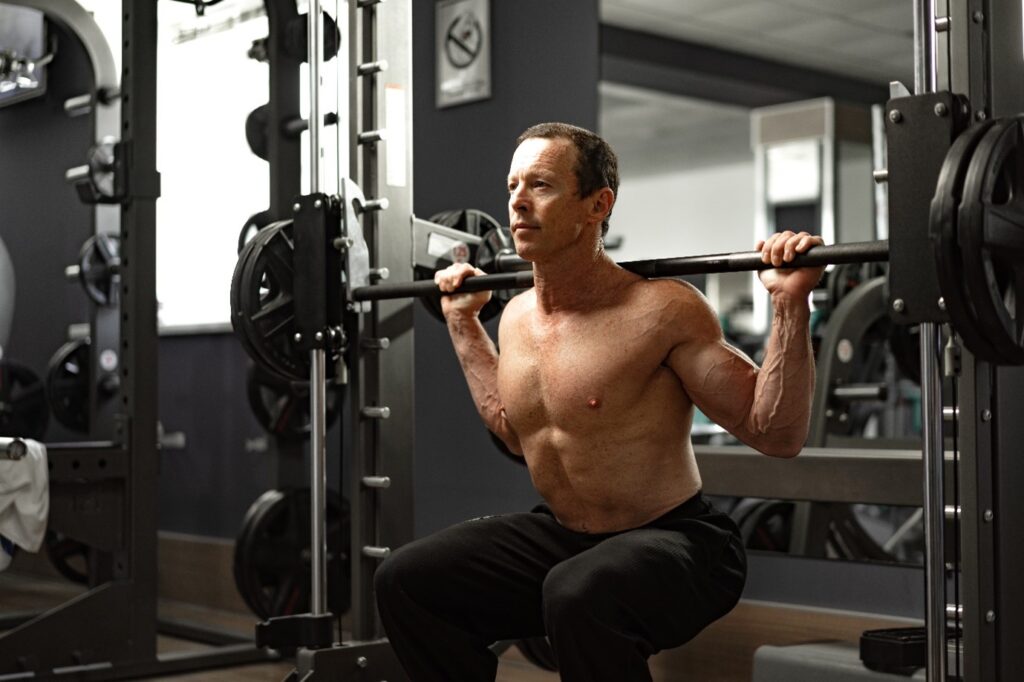
The Smith machine lets you move the barbell in a regulated way, which makes it simpler to work out safely without a spotter. You may do squats, lunges, bench presses, and shoulder presses with confidence. For commercial gyms and performance centres, it's a reliable training machine for working out the whole body.
3. Hack Squat Machines – Leg Power and Core Stability

For building up the lower body, plate-loaded hack squat machines are a must. Having stronger legs means you can run faster, have better balance, and last longer. We at Performaxx make high-quality designs like the PRIME Hack Squat that are safe and long-lasting.
4. Leg Press Machines – Lower Body Strength Builder

Our selectorized and plate-loaded leg press machines work your quadriceps, hamstrings, and glutes the best. They are some of the best full-body workout machines to use with strength programs since they move smoothly and have customisable settings.
5. Chest Press Machines – Upper Body Power

The selectorized chest press works the chest, triceps, and shoulders all at once, which helps you create functional pushing strength. It's great for busy gyms and training spaces because it's easy to change the resistance.
6. Lat Pulldown Machines – Back and Core Engagement

The lat pulldown is a basic exercise in our selectorized range that works the lats, traps, biceps, and core. This is a crucial full body exercise machine for any gym since strong back muscles are important for posture, stamina, and pulling strength.
7. Seated Row Machines – Balanced Pull Strength
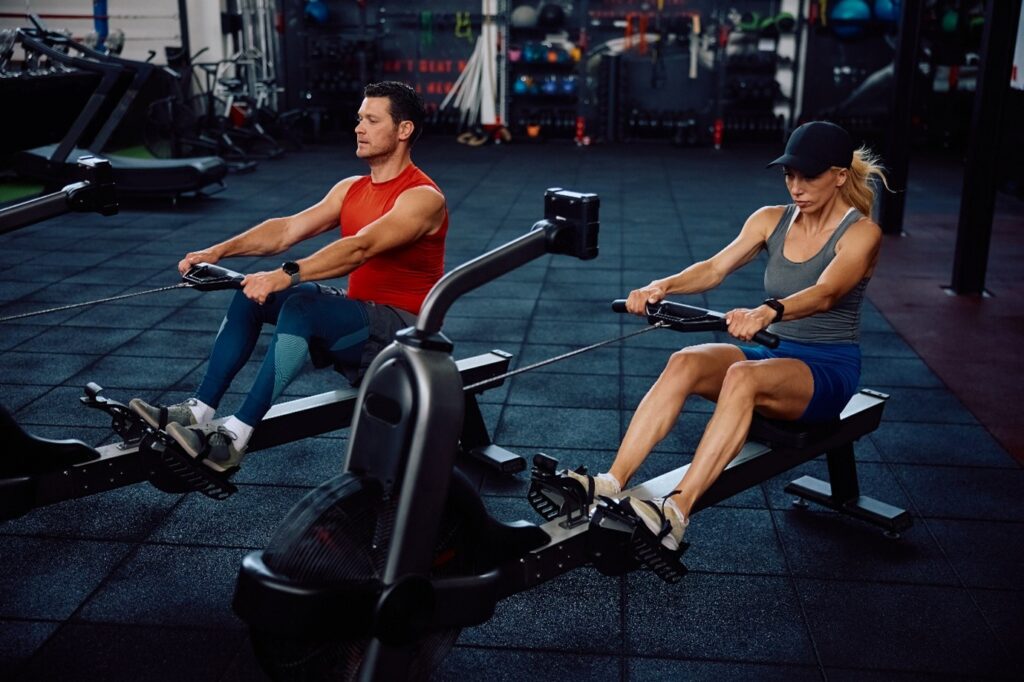
The seated row works the back, shoulders, and arms to improve strength in addition to pushing movements. It helps keep the front and back muscles in harmony, which helps athletes prevent injuries and imbalances.
8. Dumbbells & Kettlebells – Timeless Full Body Training
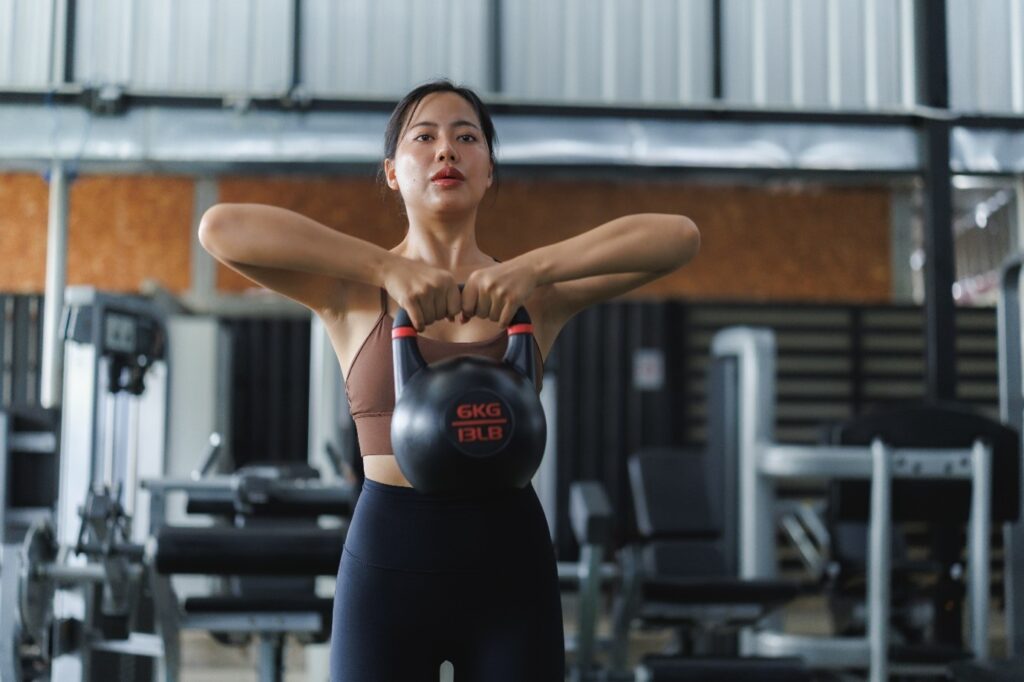
Our stainless-steel dumbbells and competitive kettlebells can be used in many different ways for training. These basic pieces of full-body training equipment, such presses and rows, swings and carries, help you get stronger, more coordinated, and more endurance. They keep organised and safe in any training location with their own storage for exercise equipment.
9. Olympic Barbells & Plates – The Foundation of Strength

Performaxx sells Olympic-quality barbells and bumper plates for squats, deadlifts, cleans, and presses. These traditional instruments are still the most important part of getting fit all over your body, and they may be used in a lot of different ways by athletes and members.
10. Flywheel Training (Desmotec) – Next-Level Performance
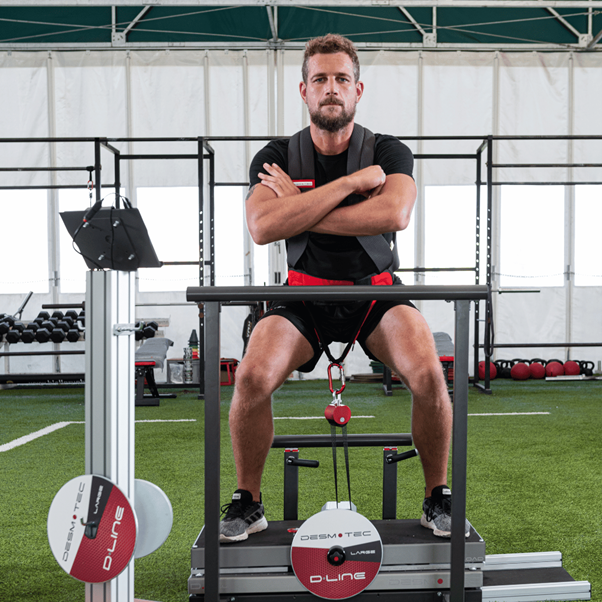
Our Desmotec flywheel equipment for advanced training gives you eccentric overload, which boosts power, recovery, and injury prevention. This one-of-a-kind full-body exercise machine is popular with top sports teams and performance centres because it takes training to the next level.
11. Boxmaster – High-Intensity Boxing Training

The Boxmaster gives you a high-energy boxing workout that works up your upper body, lower body, and heart at the same time. It's enjoyable, works well, and is one of the best things gyms can add to their collection of full body workout exercise machine.
The Role of Gym Equipment Storage
Great training facilities don't just include machines; they also need to be well-organised. Performaxx provides personalised storage options for gym equipment, making sure that dumbbells, kettlebells, plates, and other accessories are kept secure and organised. A clean space not only looks professional, but it also makes the experience better for members.
Why Choose Performaxx?
- Only available in certain countries: PRIME, Rogers, Atlantis, Desmotec, Boxmaster, and Intek
- Custom fitouts for everything from small studios to big sports teams
- Machines that are built to last and work well to get results
- Full-service solutions, from providing equipment to storing it and setting it up
Final Thoughts
To get very fit, you need to find the appropriate equipment to balance strength and stamina. Performaxx has the best full-body fitness machines for gyms and performance centres. These include hack squats, chest presses, flywheel training, and boxing stations.
Thanks to our knowledge and high-quality collaborations, your facility won't just have equipment; it will also get results that excite.
How to Do Dumbbell Front Raises Correctly: Variations and Mistakes to Avoid

The dumbbell front raise is one of the best and easiest workouts for creating strong, sculpted shoulders. This exercise is also known as the dumbbell forward raise, the dumbbell anterior raise, or just the front raise with dumbbell. It works the front deltoid muscles and can aid with posture, upper-body strength, and the look of the shoulders overall.
Even though the exercise looks easy, a lot of people who go to the gym do it wrong without knowing it. Bad form not only makes results worse, but it also makes injuries more likely. We'll show you exactly how to execute db front raises with the right form in this article. We'll also talk about several ways to do them to keep your workouts interesting and point out pitfalls to avoid.
Why the Dumbbell Front Raise Matters
Almost every action of the upper body depends on the shoulders. Your deltoids are used every day for things like pushing things over your head and carrying groceries. The anterior deltoid is the most important of the three deltoid heads (front, side, and rear) when it comes to lifting your arm forward.
The front rise with dumbbells works this muscle directly. Adding it to your training can:
- Build shoulder definition: which is important for healthy and attractive upper-body growth.
- Increase your pushing strength: which will help you with exercises like bench presses and overhead presses.
- Support daily movement patterns: Makes you stronger for doing what you do every day.
- Promote good posture: This helps balance out the chest dominance that typically causes slouching.
This workout should be a part of your regimen, whether you're an athlete, a personal trainer making programs, or just someone who works out at home with free weights.
How to Do the Dumbbell Front Raise Correctly
 Doing the workout correctly is really important. Follow these steps:
Doing the workout correctly is really important. Follow these steps:
The Starting Point
- Stand up straight with your feet shoulder-width apart.
- Hold a pair of dumbbells in front of your thighs with your palms facing down (overhand hold).
- Keep your chest up, shoulders back, and core tight.
Execution
- Slowly raise the dumbbells in front of you, keeping your arms straight but not locked.
- Lift your arms until they are level with the floor (shoulder height).
- Stop for a while at the top to thoroughly work your anterior delts.
- Bring the dumbbells back down to the starting position in a controlled way.
Pro Tips
- Use weights that are light to moderate; the idea is to isolate, not to show off.
- Don't swing; keep your motions smooth.
- Keep your elbows slightly bent to put less tension on your joints.
- Breathe out as you raise and in as you lower.
Variations of the Dumbbell Front Raise
To prevent plateaus and engage your muscles from different angles, try these variations:
- Alternating Dumbbell Front Raise
Instead of lifting both arms at once, lift one dumbbell at a time. This helps you pay attention to each side separately, which makes you more balanced and less likely to cheat.
- Neutral Grip Front Raise (Thumbs Up)
Keep your hands facing each other while you hold the dumbbells. This version puts less stress on the shoulder joint while still working the anterior delts.
- Incline Front Raise
Do the exercise while resting on your stomach on an incline bench. This position stops movement, so your shoulders have to perform all the work.
- Plate Front Raise
Change the dumbbells for a weight plate. Holding the plate with both hands keeps the tension steady throughout the action.
- Barbell Front Raise
Using a barbell lets you lift slightly heavier weights since it spreads the weight evenly across both arms. Great for people who want to test their strength and stability.
- Resistance Band Front Raise
If you don't have dumbbells, bands are a wonderful option. They give your muscles different kinds of resistance as you work out.
Common Mistakes to Avoid
Even experienced lifters might get into negative habits when they use front raise dumbbells. Here are the traps to be aware of:
- Using Too Much Weight
The most typical mistake is picking up weights that are excessively heavy. This makes the exercise more about swinging, jerking, and rotating than about working specific muscles. - Swinging the Arms
You shouldn't be using your hips or lower back to lift the dumbbells. Make sure your movements are slow and controlled. - Lifting Too High
When you lift the dumbbells over shoulder height, the tension moves from the delts to the traps. This makes the exercise less effective and puts you at danger of strain. - Poor Posture
Rounded shoulders or an arched back not only make it harder to move, but they also put you at danger of getting hurt. Stand up straight, use your core, and maintain your spine straight. - Neglecting the Negative (Eccentric Phase)
A lot of lifters let go of the dumbbells right after they lift them. The lowering phase is equally as crucial for getting stronger and more control.
Programming the Dumbbell Front Raise
Do you want to know how to include db front raises into your workout?
• Repetitions and sets: Do 3–4 sets of 10–15 repetitions.
• Weight: Start with a low weight. Before adding weight, pay attention to your form.
• Placement: The best time to do it is after your primary compound lifts, such the bench press and overhead press. You can use them as extra work or to focus on one thing.
• Frequency: Most training programs only need to be done once or twice a week.
Dumbbell Front Raises and Free Weights: Why They’re Worth It
One of the benefits of doing front raises with dumbbells instead of machines is that free weights may be used in many different ways. When you use dumbbells, you need to stabilise them by using supporting muscles and building functional strength. This makes dumbbell training very useful for athletes and fitness professionals in both sports and everyday life.
Performaxx sells a high-end line of dumbbells and free weights machine for performance centres, sports clubs, and gyms who want to help their members get the best results possible. The right equipment, when used correctly, makes sure that it lasts, is safe, and is worth the money in the long run.
Final Thoughts
The dumbbell anterior raise may seem easy, but when done right, it's one of the best workouts for building strong, sculpted shoulders. You may safely make your delts bigger and stronger by learning the right way to do it, trying out different versions, and avoiding frequent pitfalls.
Choosing the appropriate front raise dumbbells is just as vital as your form, whether you're a gym owner setting up your performance space or an individual trying to improve your training. We work with top companies at Performaxx to provide high-quality free weights and strength equipment that help athletes, trainers, and regular people attain their goals.
It doesn't happen quickly, but with the correct gear and regular workouts, you'll be well on your way to having strong shoulders.
How Interval Training Improves Speed and Endurance for All Fitness Levels

Interval training is one of the best and most flexible ways to improve your fitness performance. Interval training works for individuals of all fitness levels. It may help beginners build stamina, athletes get faster, and gym owners create programs for a wide range of members.
Before we get into the benefits, let's go over the basics: what is interval training and why is it important?
What is Interval Training?
Interval training is a form of exercise that alternates between brief bursts of high-intensity activity and longer periods of lower-intensity recovery or rest. This mix of hard work and rest is what makes interval exercises so beneficial.
Think of it like a training rhythm: work hard for a set amount of time, rest, and then do it all over again. For instance:
- Running for 30 seconds and then walking for 60 seconds.
- Doing kettlebell swings for 45 seconds, taking a 15-second break, and then doing them again.
- For one minute, ride your bike as hard as you can, then for two minutes, ride it at a slow pace.
This cycle of stress and rest helps the body adapt faster than steady-state training, which over time makes both speed and endurance better.
Also Read: How to Do Dumbbell Front Raises Correctly
What is an Interval Workout?
An interval exercise is one round of work and rest, like 20 seconds of fast rowing followed by 40 seconds of moderate rowing. A full interval workout is made up of many of these rounds.
You can change these routines to meet practically any level of fitness and equipment. People often use them in:

- Cardio workouts include running on a treadmill, rowing intervals, and cycling.
- Strength training using kettlebell complexes, weighted sledge pushes or barbell circuits.
- Functional training includes bodyweight exercises like burpees, jump squats, and mountain climbers.
The best thing about interval training is that you are able to modify it. You can change the length, intensity, and rest periods to fit the person's degree of fitness or goals for performance.
Why Interval Training Works: The Science Behind It
How well intense interval training workouts depends on how the body reacts to stress. Short bursts of activity put stress on both aerobic (endurance) and anaerobic (power) systems, which makes the body respond in different ways:
- Higher VO₂ Max: Interval training helps the body use oxygen more efficiently, which is an important sign of endurance performance.
- Higher Lactate Threshold: By making the body work harder, athletes can keep going for longer without getting tired.
- Faster Recovery Times: Interval training teaches the body to recover more quickly between bursts of effort, which is important for sports and functional fitness.
- Calorie Burn and Afterburn Effect: High-intensity intervals speed your metabolism long after the workout is over, which helps you lose fat and burn more energy.
Benefits of Interval Training for All Fitness Levels
- For Beginners
It can be overwhelming to start a fitness journey. Interval training gives you brief, controllable surges that keep exercises interesting without being too much. Walking and jogging in intervals, for instance, is a terrific technique to slowly build up your endurance.
- For Intermediate Fitness Enthusiasts
People who have previously created a base can employ interval training to get over plateaus. Using dumbbells, barbells, or kettlebells to do resistance-based intervals improves both your heart and muscle endurance.
- For Advanced Athletes
Professional athletes and people who go to the gym to get better at their sport employ intensive interval training sessions to improve their speed, agility, and explosive strength. The challenge helps improve performance for competitive sports, whether it's sprint drills, plyometrics, or advanced weightlifting intervals.
Speed and Endurance: The Dual Advantage
Unlike steady-state cardio, which frequently focusses only on endurance, interval workouts develop the body to perform better across both spectrums.
- Speed Gains: Doing sprints or power lifts over and over again trains fast-twitch muscle fibres, which makes you faster and more explosive.
- Gains in endurance: Structured recovery phases train the heart and lungs to work well for extended periods of time.
This two-in-one benefit is why interval training is now the most popular way to train for athletes and for gyms, performance centres, and fitness studios that work with a wide range of clients.
The Role of Premium Gym Equipment in Interval Training
Using high-quality gym equipment can make interval workouts more successful and help you get the most out of them. High-quality machines and strength equipment make sure that safety, accuracy, and consistency are all in place. This is important for keeping up the intensity without losing form.
Some good equipment for interval training is:
- Treadmills and rowing equipment for intervals of cardio.
- Power intervals with strength devices like squat racks or plate-loaded presses.
- Functional training rigs for circuit-based interval workouts.
- Boxing stations or sleds for high-intensity workouts.
For gyms and performance centres, buying high-quality gym equipment not only draws in new members, but it also allows them to offer a wide range of training programs for people of all fitness levels.
Practical Tips for Starting Interval Training
- Make your goals clear: Decide if your main goal is to lose weight, get faster, get stronger, or just be fit in general.
- Start small: If you're new, start with shorter intervals (20–30 seconds) and longer recovery times (1–2 minutes).
- Mix Modalities: For a well-rounded workout, do both aerobic and strength-based intervals.
- Keep an eye on your progress: You can do this via wearables, gym software, or equipment consoles.
- Put quality equipment first: Reliable benches, racks, cardio machines, and functional rigs make workouts safer and more successful.
Final Thoughts
Interval training is more than just a fad; it's a tried-and-true way to help people of all fitness levels go faster, stronger, and better at everything they do. Interval workouts are useful for everyone, from beginners who are just starting to work out in a disciplined way to elite athletes who are trying to get little gains.
Offering interval-based programs with high end gym equipment can be a game-changer for gym owners and performance centres. It not only improves client results, but it also makes your facility a leader in training that focusses on performance.
The next time someone asks, "What is interval excerise and why should I do it?" the answer is simple: it's one of the best, most effective, and open-ended means to reach your full physical potential.